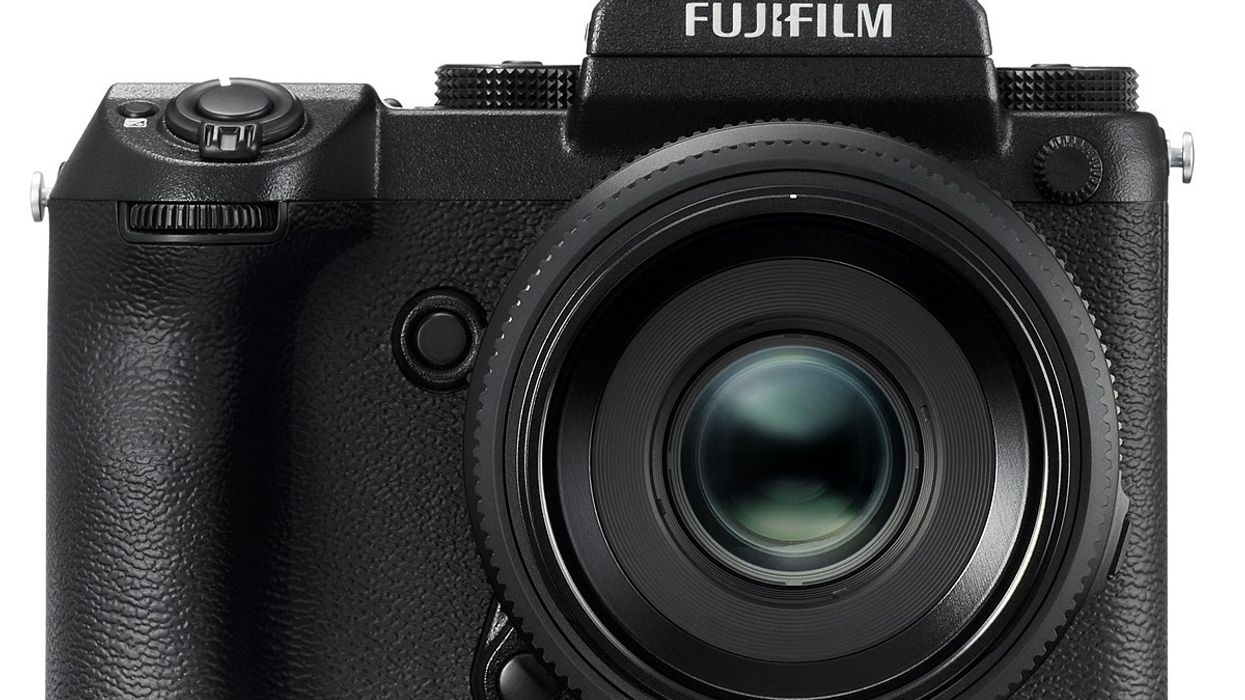FujiFilm GFX 50S is a Mirrorless, Giant Sensor Beast with Movie Mode
Reported tech specs:

Big sensors cost more money to build and require bigger lenses to cover, but the image quality benefits they offer can make it worth the effort. These include lower noise and smoother, higher resolution images. Shallower depth of field at the same field of view. Often better low light performance. The Alexa 65, for example, has generated some stunning footage, first reaching a mass audience with The Revenant. With the Fujifilm GFX 50S, Fuji is taking a dive into mirrorless medium format image capture, with a sensor that is 43.8x32.9mm, 1.7x bigger than the 36x24mm full frame 35mm sensor size.

While medium format was long popular in the still photo universe, many of those standards were built around needing a mirror for viewfinding, and Fuji has started over nearly from scratch with the new platform, designing a new sensor, new lenses, and most important, a new lens mount, closer to the sensor than in medium format film mounts.
Why does this matter to filmmakers? Italian filmmaker Max Angeloni got his hands on a pre-release version of the camera, and has thankfully shared with the world that there is a Movie Mode (scroll down for the menu image). While features in pre-release bodies do sometimes disappear before release, it's rare, and if Fuji is letting photographers get their hands on this, they had to know that it would leak out. We can't tell from the images precisely what format the movie mode will offer (4K seems likely, especially since they have already brought it to the X-T2, and we don't know if the recording media can handle 6K or 8K), but we do know that a clean HDMI signal output will be available, which is a good sign. Combine that with any of the solid 4K external recorder options on the market, such as those from Atomos, and there is the potential for a big sensor video camera that could be huge with indie projects.

The other feature that has people excited is the 800g weight of the body; despite the large sensor size, the body itself is very compact, not much bigger than the X-T2, though much deeper. The viewfinder is a removable accessory, which is nice for remote rigs, but even when attached to the body, it can be angled horizontally and vertically for complicated operating situations.
Coming early 2017, pricing is yet to be announced, but the rumor is that it should come in around the same price as the Hasselblad X1D-50c mirrorless, which runs about $8900 without a lens (but the Hasselblad was limited to 1080p video.) You can sign up for updates on the B&H page, though official pricing hasn't arrived there as of publishing.
- 43.8x32.9mm Bayer Array sensor
- Mirrorless G mount lens, 26.7mm flange depth
- 51.4 Megapixel stills
- 4:3 default aspect ratio
- 14° Fahrenheit minimum operating temperature
- Removeable and orientable viewfinder
- Tiltable screen











